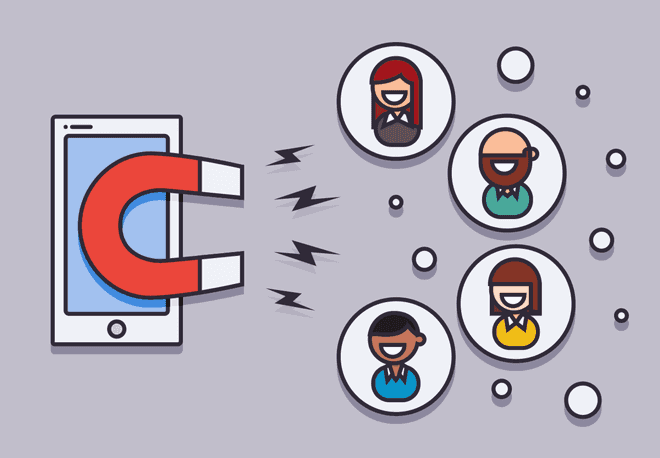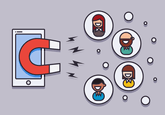
November 21, 2016
When devs create apps, it feels like that is the project. But once an app is built and released on an app store, it becomes obvious: creating the app was just the start of the journey. Now comes the really exciting (and scary) stuff: getting that app in front of users who will find it useful, and making sure they keep coming back to your app on a regular basis.
According to the Developer Economics State of the Developer Nation bi-annual report, mobile is the key platform for application development, with developers also building solutions for desktop browsers, IoT, and now emerging technologies, which includes VR and Machine Learning. But for professional developers, the main game is still mobile, and Android is increasingly dominating as the mobile app platform of choice.
So after you’ve built an app, the first task is to position it so that your potential users start downloading it. User acquisition is all about getting app downloads. After downloads start climbing — even a slow increase is okay as long as it is steady — then it is important to start focusing on retention: getting users to start integrating your app into their habits so they reach for your app regularly.
Caroline Ragot, co-founder of Women in Mobile and a mobile strategist at Schibsted Spain, who has helped shepherd apps at several businesses into top ten rankings, says that without an early focus on retention, any resources invested in user acquisition can be wasted. “When you have a good base, then you can decide to go stronger on acquisition and invest more in downloads, but there is no use doing that too early,” Ragot said. “If you acquire and you cannot retain, then that is money you are throwing out the window.”
Brenden Mulligan, who is currently working on the app platform Firebase, is the former LaunchKit founder, which was recently acquired by Google. He said that the easy answer to retention is to “create an engaging and valuable experience and users will keep coming back over and over.” But, of course, it’s rarely that easy. “Users are constantly distracted with other apps, and everything else going on in their life. Therefore it helps for devs to build in re-engagement triggers into their app. Keep users interested in what’s going on within the app, and remind them to come back if they’ve lapsed too long. Study user behavior to know what the signs of a churning user look like and set up notifications and incentives to come back in before they lose interest.”
App user retention strategies fall into three categories:
- User experience
- Re-engagement
- Performance.
Retention Strategy 1: User Experience
Ægir Thor Steinarsson and Anne-Marthe Lorck recently built the BudUp app aimed at supporting users to make new friends by letting them create and post activities or to join posted activites. Steinarsson said that now that the app has been released, he wants to focus on activities that don’t necessarily scale, but that give him a depth of insight into how downloaders are using the app. “You need to go and talk to people and stop hiding. It is very intimidating. For people who have spent a year and a half building something in the bedroom, it can be really scary.”
Ragot agreed. “You need to speak to people who are using the app, even if you are a dev and social skills are not your forte, you need to go out of the building because that will help you improve your app.” Ragot said that after launching an app, devs should be speaking to every single user. “Do they understand how to use the app? Do they get value out of it? Ask them to use the app in front of you.”
Ragot said the basic funnel for app user retention is the signup process. This is crucial because it is an early step in having the user make a commitment to using the app, and by signing in, it makes it easier to use retention strategies like social media plugins that let the user share in their networks that they are using your app (see part one on acquisition).
Ragot said watching users go through this basic funnel can be revealing. “Even in the beginning, you will see that some don’t know how to hide the keyboard, and maybe that is hiding the button for ‘next’ so if the user is blocked, they don’t complete the signup and they don’t come back. If you paid $1.50 to get that user, that is $1.50 you just lost.”
Retention Strategy 2: Re-Engagement
Echoing Mulligan’s comments about re-engagement triggers, Ragot also suggested using a number of app marketing and user retention products to help automate engagement with users. “The basic strategy is to use a tool for push notifications or in-app messages so you can segment your users,” said Ragot. She suggested using some mobile marketing automation tools to be able to create at least two types of segmentation. The first would be a re-engagement trigger automation so that when users have not used the app within a certain time frame — say, more than one week — they are prompted with a reminder that encourages them to use the app again. For apps like Steinarsson’s BudUp that have a geographical focus for the user, Ragot suggests also using a geographical segmentation to send relevant messages to users within a particular area. She pointed to Appboy, Swrve and Firebase as three tools that can help with this automation and re-engagement.
Ragot also suggested that devs regularly scan reviews of their app and respond to each comment. “Look at every single one and reply to each of them,” Ragot recommended. For now, devs can respond to reviews in Google Play, but apparently Apple has plans to introduce a similar feedback feature soon, too. “You can even say, send an email to support at whatever and we will help you. Try to talk to them, make a list of complaints about what are the major problems. Then you first fix what’s not working, and then you build the cool new features.”
Retention Strategy 3: Performance
Knowing when users are frustrated by their app experience leads to the third important strategy for retaining users: keeping your app highly performant.
48% of users who download an app and see it crash are less likely to use the app again and often quickly delete it for good from their device, with a third (31%) of downloaders then telling others of their negative experience.
“It is very important to have a tool to see the crashes in your app,” said Ragot. She recommended Fabric, which is made by Twitter. “You can integrate their SDK and see live how many people are using your app. It even prioritizes the crashes: it details the number of crashes and identifies at what line of your code it is happening.”
Ragot says that app developers should be aiming for 98% crash free performance.
Acquiring users is a challenging process, so devs need to be sure they can retain those users once they start using your app. Otherwise, there is a risk that the money, time and effort spent on acquisition is wasted as users have a quick look, and never return again.
These retention strategies work equally as well with Android, iOS and Windows mobile apps, but many of the tools available are embedded in the Google Play platform or able to be integrated with Google Play. This is incredibly important, as according to VisionMobile’s Developer Economics State of the Developer Nation bi-annual report, 80% of developers building apps professionally are targeting the Android platform.
In our final part of our series, we look at how developers can set up an analytics process to track acquisition and retention, and we unlock some of the next wave strategies that are not yet flooding the industry and may offer new apps a competitive advantage.
We are currently running our new survey and it is sci-fi themed! Would you like to contribute ? Take the survey
Recent Posts

August 27, 2025
How to Find the Right Learning Path When You’re Switching to a Tech Career
See post

August 22, 2025
Developer News This Week: AI Speed Trap, GitHub Copilot Agents, iOS 26 Beta Updates & More (Aug 22, 2025)
See post

August 08, 2025
Developer News This Week: GitHub GPT-5, VS Code 1.103 & Chrome 139 (Aug 8, 2025)
See post
